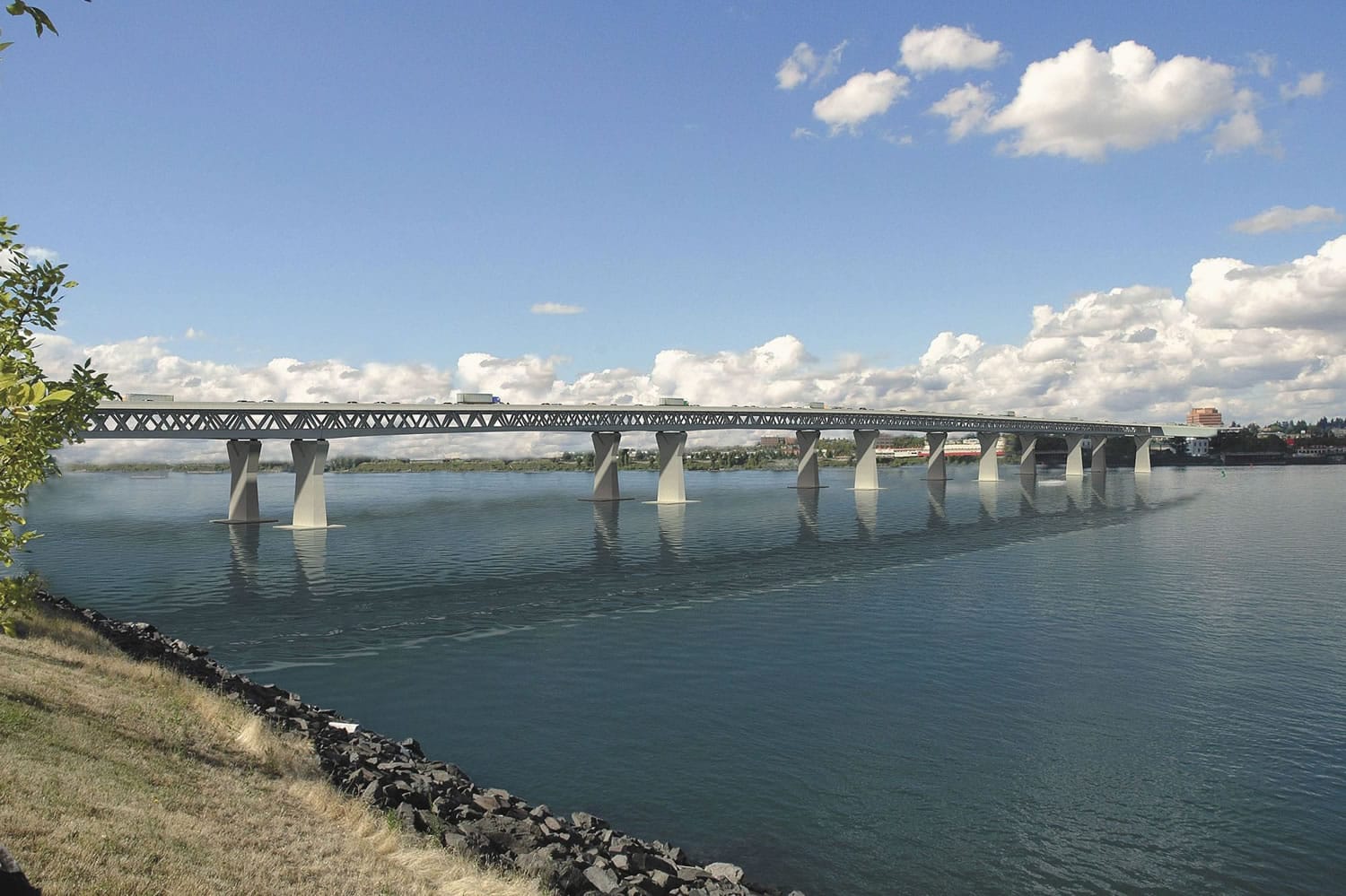Vancouver: 2 to 4 p.m. and 6 to 8 p.m., Oct. 12, Vancouver Community Library, 901 C St.
Portland: 2 to 4 p.m. and 6 to 8 p.m., Oct. 13, Jantzen Beach SuperCenter Community Room, 1405 Jantzen Beach Center.
On the Web:
To see the Columbia River Crossing’s Final Environmental Impact Statement visit:
Columbia River Crossing
The final environmental plans for the Columbia River Crossing were delivered to the federal government for approval Wednesday, setting in motion the last step before planners can acquire property, ask for federal and state funding and finish design on the largest public works project in the history of the Pacific Northwest.
Crossing officials hope to get approval from the federal highway and transit administrations by December, which would keep the project on track to break ground in late 2013, CRC director Nancy Boyd said.
What it means: Federal government approval of the document locks into place the locally chosen option of a replacement deck-truss-style bridge, the extension of light rail from Portland and seven interchange improvements over five miles. “We’re glad we’re at this point, this is a huge milestone for us,” Boyd said.
Vancouver: 2 to 4 p.m. and 6 to 8 p.m., Oct. 12, Vancouver Community Library, 901 C St.
Portland: 2 to 4 p.m. and 6 to 8 p.m., Oct. 13, Jantzen Beach SuperCenter Community Room, 1405 Jantzen Beach Center.
Submitting the Final Environmental Impact Statement does not mean an automatic approval — it is possible that the federal government could choose a different path than the one area agencies signed off on, including a “no build” option, Environmental Manager Heather Wills said.
The document is available on the project’s website, www.columbiarivercrossing.org, and hard copies will also be available at local libraries and upon request. Public comment starts Sept. 23 and will be open for 30 days; all public comment will be sent to the federal highway and transit authorities.
Wednesday’s hand-delivery of the FEIS to Washington D.C. marks six years since the project officially began and three years since the CRC published a Draft Environmental Impact Statement. More than $132.6 million has been spent in planning. The project is expected to cost $3.1 billion to $3.5 billion.
Boyd and the project team said that amount of time is actually very brief for the thousands of pages of technical reports and other federal environmental requirements the massive document contains.
“Three years between the DEIS and the FEIS is something we should be proud of,” Boyd said.
Major changes
Among the biggest changes since the draft was published in 2008 include a refinement of the State Route 14 interchange to reduce impacts to the Fort Vancouver National Site and a reduced footprint on Hayden Island in north Portland. The alignment of light rail in downtown is now set to run north on Broadway, east and west on 17th Street and south on Washington Street.
Barring delays in pulling together federal and state funding, the completion of the FEIS keeps the project on track to finish construction by August 2022. While federal and state money is far from certain, Boyd said not all of the billions of dollars must be secured at once. As more phasing and design information is available, the project will be able to ask for staggered infusions of cash.
Included in the document are adjustments to the financial plan recommended by Oregon Treasurer Ted Wheeler, including significantly lowered projections for toll revenue (now expected to be $600 million less than expected) and the likely use of both pre-completion tolling starting in 2014 and federal loans to cover the gap.
But the FEIS does not lower its traffic and congestion figures as well, despite the fact that current models far overestimate use.
While conservative estimates are prudent in assessing financial risk, it’s better to have the highest possible traffic counts in an environmental study, because then the highest possible environmental impact will be known, Boyd said.
The higher numbers weren’t left in to better sell the federal authorities on the need for the project, CRC Deputy Director Kris Strickler said.
“The need is pretty apparent now,” he said. “We’ve based this on current need.”
The FEIS also details the properties set for acquisition, which federal approval of the project will allow to begin. Boyd said once she gets the federal Record of Decision, she’ll start petitioning the states for money to buy right of way land and working with property owners on real estate deals.
“That can sometimes take a couple of years,” she said. “We need to start down that road.”
Many landowners have known for several years that their homes or businesses are slated to be demolished, though some Vancouver residents have complained that the uncertainty of when they’ll have to move is delaying repairs and causing their neighborhood to deteriorate.
Impacts unknown
The document still also claims that 20,000 jobs will be sustained or created, although critics have said that figure is overinflated. Wills clarified, saying that figure is for the entire 11 years of the project, so about 1,900 jobs annually will be saved or created.
Also in the document are possible construction staging areas, a list of expected environmental impacts and plans for mitigating adverse affects caused by the CRC.
One thing that’s not included is just how the project plans to phase construction, and what the expected impacts to businesses and residents may be.
The project is at about 15 percent design completion, Wills said. The FEIS details a total footprint of environmental impacts, not the specifics of when which road will be closed.
“We don’t know what roads are going to be closed for however long because we don’t have that kind of detail,” she said.
Andrea Damewood: 360-735-4542 or andrea.damewood@columbian.com or www.facebook.com/reporterdamewood or www.twitter.com/col_cityhall



